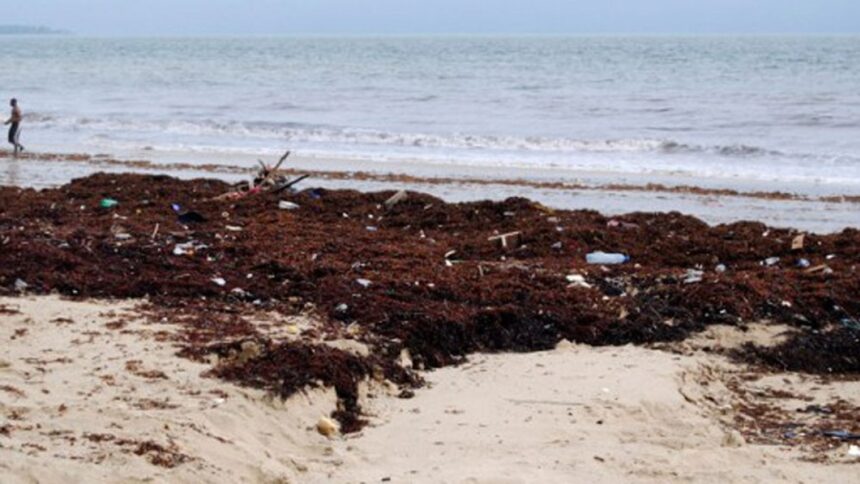By Alie Sonta Kamara
Sierra Leone is losing millions of dollars in seaweeds as the National Tourist Board is detrimentally oblivious to the growing financial value of our dear seaweeds in diversifying the country’s economy.
Almost every year, seaweeds come ashore and fill our open beaches. The National Tourist Board, considering this as waste and burden, has always called for beach clean-up, totally unaware of the financial benefits this will bring.
According to Future Market Insights, the seaweeds market is estimated to be worth USD 9.39 billion in 2025 and is projected to reach a value of USD 23.92 billion by 2035, expanding at a CAGR of 9.8% over the assessment period of 2025 to 2035.
Up to 85 percent of farmed seaweed is currently used for non-staple foods and food ingredients. It is a good dietary source of micronutrients, fibre, and antioxidants. Seaweeds are a typical part of Chinese, Japanese, and Korean cuisines, all of which continue to grow in popularity globally.
Indonesians and Filipinos use seaweed for desserts, and a small minority uses it for salads, soup, flavourings and snacks. In Malaysia, it is added to rice dishes such as nasi kerabu.
As an ingredient, seaweed is used in both edible and non-edible items. Dried seaweed is sold as hydrocolloids (as carrageenan), which is used as a functional ingredient in food formulation to improve food consistency, as an emulsifier, and to control texture, flavour and shelf life.
Instead of focusing on how to attract tourists, open the tourist market, and encourage locals who are doing their best to boost the industry, the National Tourist Board has taken upon itself to increase beachfront yearly fee from six thousand New Leones to one hundred thousand New Leones just like that.
When its umbrella body the Ministry of Tourism and Cultural Affairs failed woefully in the 2024 Sierra Leone Cabinet Performance Contract, it was not surprising. The missing links are glaring.




